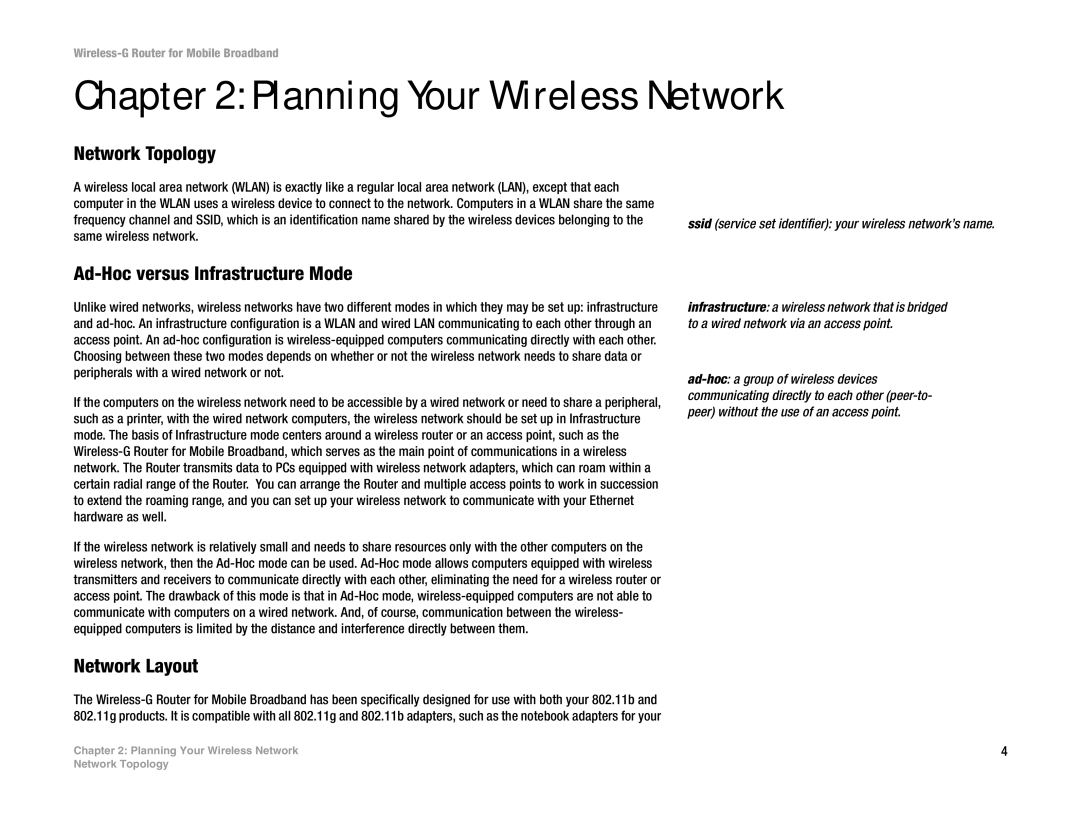Wireless-G Router for Mobile Broadband
Chapter 2: Planning Your Wireless Network
Network Topology
A wireless local area network (WLAN) is exactly like a regular local area network (LAN), except that each computer in the WLAN uses a wireless device to connect to the network. Computers in a WLAN share the same frequency channel and SSID, which is an identification name shared by the wireless devices belonging to the same wireless network.
ssid (service set identifier): your wireless network’s name.
Ad-Hoc versus Infrastructure Mode
Unlike wired networks, wireless networks have two different modes in which they may be set up: infrastructure and
If the computers on the wireless network need to be accessible by a wired network or need to share a peripheral, such as a printer, with the wired network computers, the wireless network should be set up in Infrastructure mode. The basis of Infrastructure mode centers around a wireless router or an access point, such as the
If the wireless network is relatively small and needs to share resources only with the other computers on the wireless network, then the
Network Layout
The
infrastructure: a wireless network that is bridged to a wired network via an access point.
Chapter 2: Planning Your Wireless Network | 4 |
Network Topology
